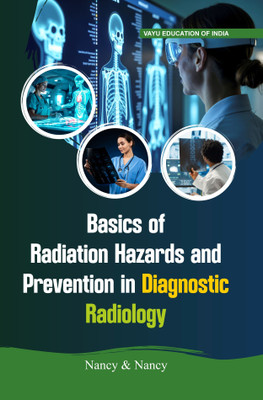Basics of Radiation Hazards And Prevention in Diagnostic Radiology(Paperback, Nancy, Nancy)
Quick Overview
Product Price Comparison
Basics of Radiation Hazards and Prevention in Diagnostic Radiology is a comprehensive study of the potential dangers associated with medical radiation exposure and the scientific methods developed to ensure safety in clinical practice. Diagnostic radiology, which includes X-rays, CT scans, and fluoroscopic procedures, plays a vital role in modern healthcare by providing accurate and non-invasive imaging for diagnosis. However, ionizing radiation used in these procedures can also pose biological hazards to both patients and healthcare professionals if not handled responsibly.Radiation hazards are generally classified into deterministic effects and stochastic effects. Deterministic effects occur when radiation doses exceed a threshold level, leading to visible damage such as skin erythema, hair loss, or cataract formation. On the other hand, stochastic effects have no threshold limit, and even low doses carry a probability of long-term consequences like cancer and genetic mutations. Thus, awareness and preventive measures are essential in reducing these risks.The foundation of radiation safety is guided by three internationally accepted principles recommended by the International Commission on Radiological Protection (ICRP): justification, optimization, and dose limitation. Justification ensures that radiation exposure is only permitted when the diagnostic benefit clearly outweighs the associated risks. Optimization, often summarized as the ALARA principle (ŌĆ£As Low As Reasonably AchievableŌĆØ), emphasizes minimizing the dose without compromising diagnostic quality. Dose limitation ensures that both healthcare workers and the general public are protected from excessive exposure by adhering to defined safety standards.


